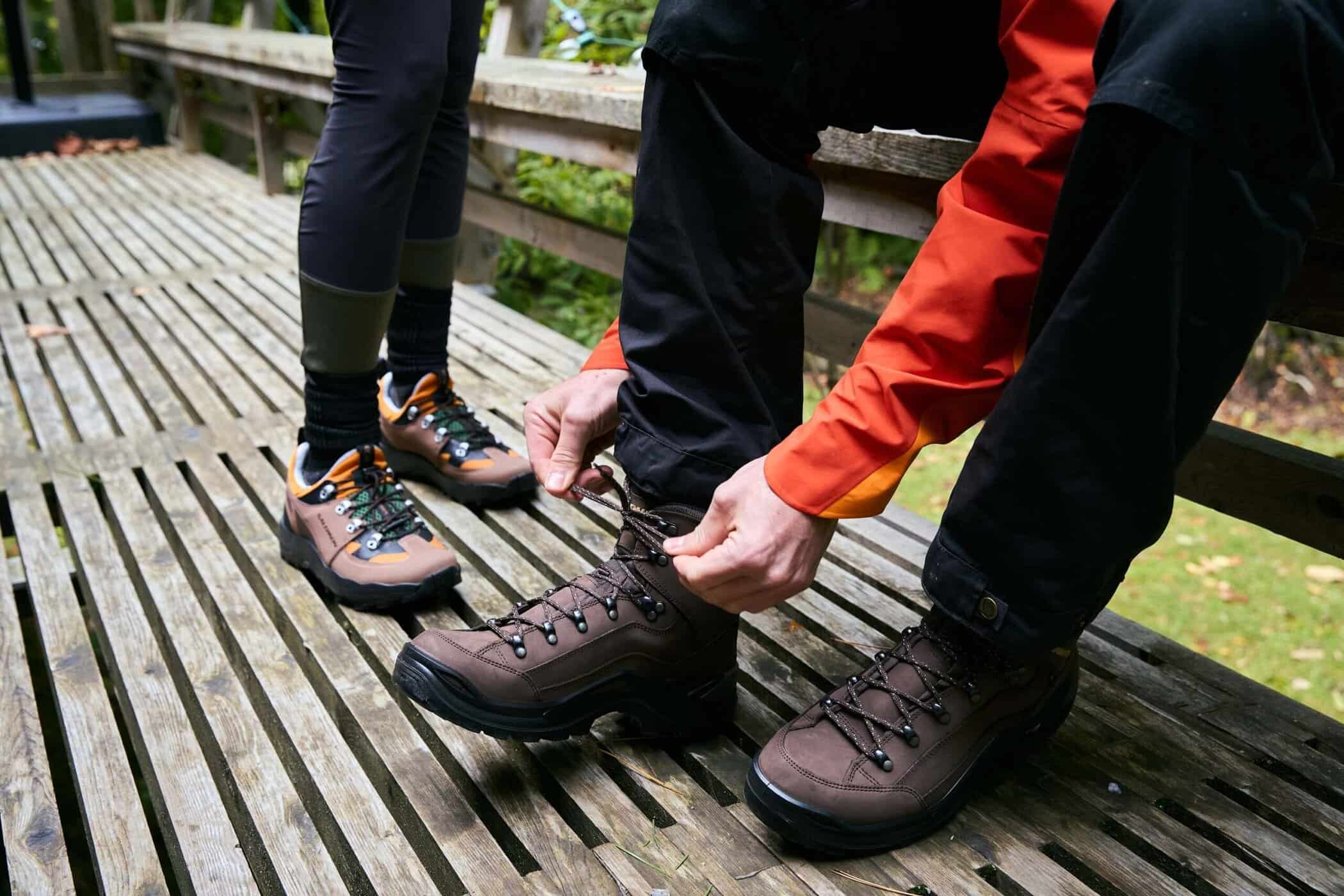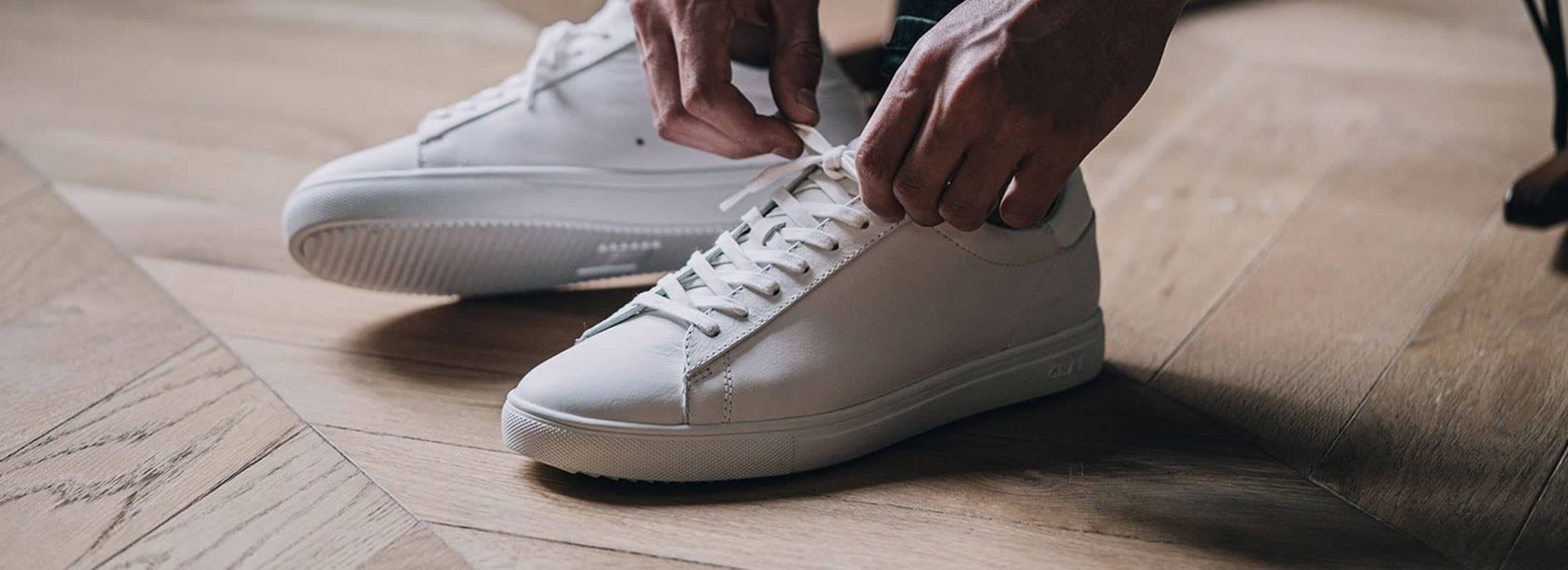Whether you’re chasing a new personal best or simply trying to stay active, choosing the right running shoes is one of the most important steps you can take—literally. The perfect pair doesn’t just feel good underfoot; it supports your stride, absorbs shock, and helps prevent injuries over time.
From rocky trails to busy city sidewalks, today’s running shoes are engineered for performance. Whether you need heel cushioning, ample arch support, or stability devices to smooth out your gait cycle, modern designs offer the features that match your running style and the surfaces you run on.
But with so many options on the market, how do you find the right pair for you?
This guide breaks it all down—foot type, running style, terrain, and even the best features to look for in a new pair. Whether you shop online or step into a store, we’ll help you make sense of what matters most in a pair of running shoes.
Table of Contents
Which Type of Runner Are You?
Before you can find the right running shoes, you need to figure out what kind of runner you are. Your goals, habits, and terrain choices will shape what kind of shoe will deliver the most comfortable ride—and help you avoid injuries along the way.
Casual Runners & Fitness Walkers
If you’re running a few times a week for general fitness or stress relief, focus on lightweight shoes that offer ample cushioning and good shock absorption. You’ll want something that feels great straight out of the box and doesn’t overcomplicate things. A neutral running shoe is often the best starting point here—especially if your foot shape doesn’t show signs of overpronation or supination.
Distance Runners & Marathon Training
Training for a half or full marathon? You need a pair of running shoes that can go the distance—literally. Ensure the shoe does not cause rubbing or blistering around the big toe, which can be a common issue during long runs. Prioritize energy return, heel cushioning, and a shoe that fits properly even after your feet begin to swell on long runs. Depending on your stride, you might opt for a zero drop shoe (if you’re a midfoot striker) or a shoe with a higher heel-to-toe drop for more support during heel strikes. Check out the best running shoes for long distance.
Pro Tip: Rotate two pairs of shoes during training to extend their life and reduce injury risk.
Trail Runners & Hybrid Adventurers
Love to mix trail running with the occasional hike?
Love to mix trail running with the occasional hike? Hybrid shoes are a versatile option that combines features of both road and trail shoes, providing comfort on roads while delivering adequate grip for trail use. You’ll need trail running shoes that handle uneven terrain, provide good grip, and protect your feet from roots, rocks, and sudden weather changes. Look for ankle support, a tough outsole, and durable upper materials that can take a beating.
Racing & Speed Work
Training for your next PB? Whether you’re doing tempo runs or lining up for a 5K, a lightweight, responsive shoe with a snappy feel will serve you best. Think minimalist shoes with less cushioning, lower heel drop, and maximum ground feel—perfect for midfoot strike runners and speed demons.
Types of Terrain
Where you run is just as important as how you run. Your running surface dictates the grip, cushioning, and durability your shoes need. Choosing a pair tailored to your usual terrain ensures a comfortable ride, better performance, and fewer injuries.
Paved Roads
If most of your running takes place on sidewalks, pavement, or packed gravel, you’ll want road running shoes. Understanding foot volume is crucial for achieving the right fit for running shoes, particularly during long-distance runs where foot volume can increase. These shoes are designed to handle repetitive impact on flat surfaces, with lightweight construction, moderate heel cushioning, and responsive midsoles for energy return. Look for a comfortable fit, reliable shock absorption, and ample cushioning to protect your joints from hard landings.
Trails and Technical Terrain
Trail runners need footwear that grips and protects. If you’re navigating uneven terrain, roots, rocks, or mud, you’ll need trail running shoes with aggressive lugs, reinforced uppers, and enhanced ankle support. A rock plate in the midsole protects your foot from sharp objects, while a wider toe box gives your foot room to splay on impact.
Snow, Ice & Winter Conditions
Winter runners face an entirely different challenge: traction and warmth. In icy or snowy conditions, opt for winter running shoes with water-resistant uppers, thermal insulation, and grippy outsoles that prevent slipping. Many models offer a zero drop shoe design for better control and natural foot movement on slick ground.
Choosing Your Running Shoes for Your Foot Type
Finding the right pair of running shoes starts with understanding your feet. Every runner has a unique gait, foot shape, and level of pronation, all of which influence how a shoe feels and performs over time. Choose wrong, and you risk discomfort, inefficiency—or worse, injury.
Let’s walk through the basics to help you match your foot type to the best running shoe.
Know Your Foot Type
Your foot shape can usually be categorized in one of three ways:
- Neutral Arch: This is the most biomechanically efficient foot type. The foot rolls inward slightly (neutral pronation) to absorb shock. Most neutral runners do well with neutral running shoes that offer cushioning and minimal motion control.
- Flat Feet (Low Arch): This foot type often leads to overpronation, where the foot rolls inward excessively. Runners with flat feet benefit from stability shoes or motion control shoes that help correct this gait cycle and offer arch support.
- High Arches: High-arched runners often underpronate (supinate), meaning the foot rolls outward and doesn’t absorb impact well. They need lightweight shoes with ample cushioning and flexibility to help with shock absorption.
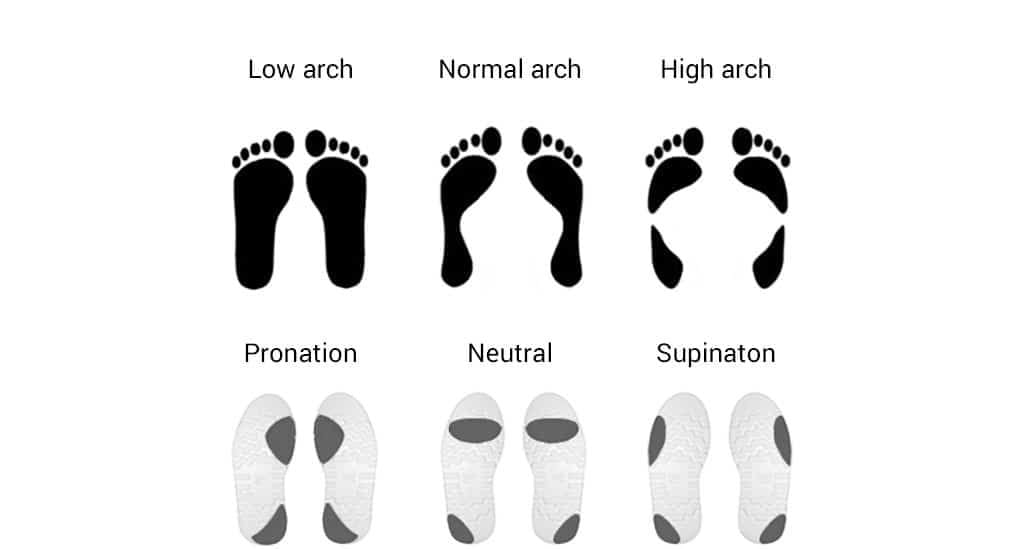
Pronation and Wear Patterns
Your gait cycle directly affects how your foot strikes the ground. The right shoe design can support the ankle, align your stride, and reduce strain on the knees and hips. If you’ve worn down a few pairs of running shoes, look at the outsole wear:
- Neutral pronation: Wear is centralized at the ball and heel.
- Overpronation: Wear is heavier along the inner edge.
- Supination: Wear shows mostly on the outer edge.
Key Features to Look for in Running Shoes
Once you’ve identified your running goals, terrain, and foot type, it’s time to get down into the nitty-gritty specs. Remember, the right pair of running shoes should offer more than just a comfortable ride—they should support your gait cycle, absorb shock, and help prevent injuries. Here’s what to focus on when buying shoes.
1. Cushioning & Support
Cushioning is the unsung hero of injury prevention. It reduces impact on your joints and delivers that sought-after energy return with every stride. Some runners have a personal preference for a more cushioned shoe for long distances, while others opt for lightweight shoes with a firmer feel for short, fast runs.
- Maximalist shoes: Offer ample cushioning and are ideal for longer efforts, recovery runs, or runners seeking extra comfort.
- Minimalist shoes: Designed for those who want a zero drop shoe or a more natural, barefoot shoes feel. These shoes encourage a midfoot strike and less heel dependency.
2. Heel-to-Toe Drop
The heel drop—or “offset”—is the height difference between the heel and the forefoot. It affects how your foot moves on impact. Pro Tip: Transition slowly if you’re moving to a zero drop shoe to avoid strain on your Achilles tendon.
- Higher drops (8–12mm) promote heel strikes, which can work for beginners or those needing more support.
- Lower drops (0–6mm) suit midfoot strikers and runners working on form or efficiency.
3. Upper Materials
The upper (everything above the sole) affects how the shoe fits and feels. It influences how the shoe feels as your foot moves mile after mile. Adequate ventilation holes in a shoe’s upper are crucial for comfort, especially during long-distance runs in warm climates.
- Look for breathable mesh if you want cool airflow.
- Choose waterproof uppers for wet weather runs.
- For structure and ankle support, look for TPU overlays that reinforce the ankle collar and heel counter.
4. Midsole & Outsole
This is where the magic (and the science) happens. Basically, the outsole should match your running surface—flexible and grippy for trails, smooth and responsive for pavement.
- The midsole houses your cushioning system—often made of EVA foam—and sometimes layered for extra stability or shock absorption.
- Some shoes include stability devices like medial posts or torsion bars to reduce overpronation.
- Trail shoes may include a shank or rock plate for protection on uneven terrain.
5. Brand Specializations
Some brands cater to specific needs—like support, speed, or long-distance training—while others offer all-around options. Check out our Best Running Shoe Brands guide for an in-depth breakdown.
How to choose the Right Running Shoes: our experts tips
Choosing the right running shoes isn’t just about brand or colour. It’s about matching your shoes to your body, goals, and running style. Whether you’re new to the sport or logging weekly mileage, here’s how to make the smartest choice.
1. Beginners vs. Experienced Runners
If you’re just starting out:
Prioritize comfort and injury prevention. Look for ample cushioning, neutral running shoes with moderate support, and a wider toe box to accommodate natural toe splay. Lightweight shoes can be a bonus, but shouldn’t come at the cost of stability or ankle support.
Most stability shoes are designed to provide added support to prevent overpronation and maintain proper foot alignment during running, featuring firm medial posts, raised areas of firmer foam, and wider soles that enhance stability.
If you’ve been running for a while:
You might benefit from rotating multiple pairs based on terrain, distance, and training intensity. A minimalist shoe could be great for short recovery runs, while a more cushioned shoe may be better for long runs. As your training evolves, so should your footwear. Pay attention to how each shoe interacts with your gait cycle, heel strike, or midfoot strike—especially if you’re pushing for speed or distance.
2. Replace Your Running Shoes Regularly
Even the best running shoes wear down. As midsoles lose their shock absorption and energy return, your risk of injury skyrockets. Small aches and joint soreness can be early signs that your shoes are no longer doing their job.
Pro Tip: Replace your shoes every 500–800 km (300–500 miles), depending on your stride, weight, running surface, and the shoe itself.
If the heel cushioning feels flat or the comfortable ride you once had starts to feel stiff or uneven, chances are it’s time for new running shoes.
3. Match the Shoe to the Surface
The running surface you train on should influence your shoe choice:
- Road running shoes are designed for paved surfaces, prioritizing light weight, smooth heel-to-toe drop, and reliable cushioning.
- Trail running shoes offer better traction, ankle support, and foot protection for uneven terrain, rocks, and roots.
- Winter running shoes are weather-resistant and built with grippy outsoles for snow and ice.
4. Avoid Common Mistakes
Buying the wrong shoes is one of the quickest ways to derail your progress—especially if you’re clocking regular mileage. Here are some of the biggest pitfalls to avoid.
- Choosing style over fit: A sleek silhouette or trending colour won’t matter if the shoe doesn’t fit properly for your foot type or running style.
- Skipping a proper fit test: Always try both shoes on. On average, your right foot tends to be slightly larger than your left. So, fit for the largest foot and make sure there’s a thumb’s width of space beyond your longest toe.
- Not paying attention to the almighty toe box: The toe box shouldn’t be too narrow—you want room for your toes to splay naturally. Look for a wider toe box if you experience pressure points, or need more wiggle room. You can also try different lacing techniques to relieve pressure or improve lockdown around the midfoot.
- Forgetting that your shoe sizing varies: Try shoes on later in the day when your feet are slightly swollen to get a true fit to your max shoe length. And remember that feet change—especially with age, training volume, or pregnancy. If you’re not sure, have your feet measured by a professional.
- Ignoring your running gait or pronation pattern: A mismatch between your gait cycle and shoe type can lead to discomfort or injury. Understanding whether you overpronate, supinate, or fall in the neutral zone is crucial.
- Sticking to the same brand by default: Shoe technologies evolve quickly. What worked for you two years ago might not be the best fit now. Try different brands, and consider how innovations in heel cushioning, heel drop, and energy return could serve you better.
- Wearing shoes past their lifespan: Old shoes may still look fine but often lose the structural support your body needs. This is especially important if you’re training for longer distances or working through high-volume running workouts.
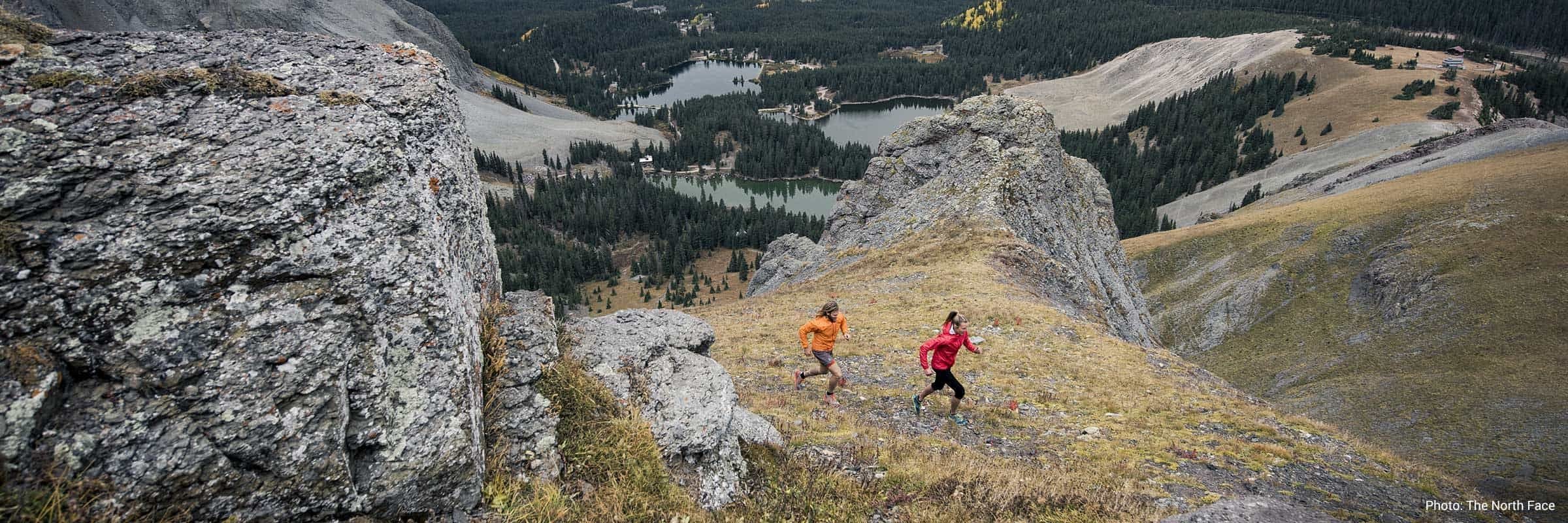
FAQ: Buying the Right Running Shoes
How do I know what running shoes I need?
Start with your running goals and terrain. Are you running on roads, trails, or a bit of both? Then assess your foot type and gait. The best running shoes will match your arch height, pronation style, and how your foot strikes the ground. Still unsure? Contact one of our agent for a gait analysis.
How do I determine my foot type for running shoes?
You can learn a lot by checking the wear pattern on an old pair of shoes or doing a simple wet footprint test.
- Neutral arch: Even pressure across the foot
- Flat feet (overpronation): Inner edge wear; look for stability shoes
- High arches (supination): Outer edge wear; go for more cushioned shoes
How do I choose running shoes as a beginner?
Look for a comfortable ride, breathable upper, and heel cushioning that supports your stride. You don’t need the most advanced model—just one that fits properly and suits your running surface. Also, consider a neutral running shoe unless you know you overpronate.
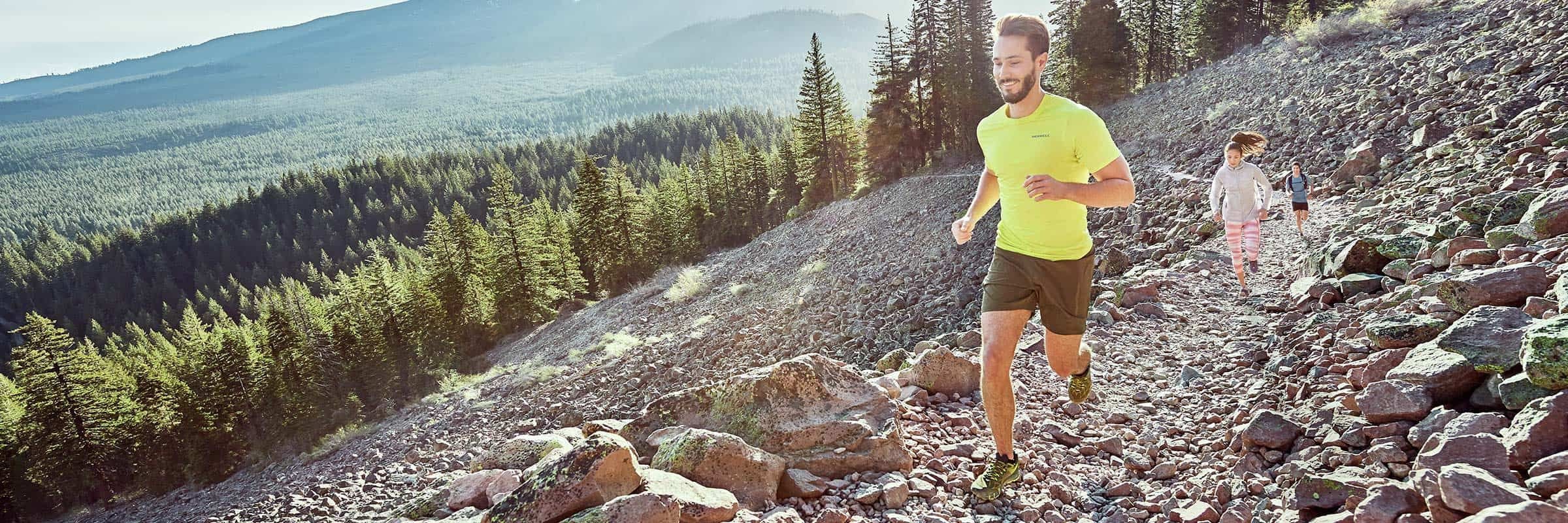
Conclusion
The right running shoes aren’t just about comfort—they’re your foundation for better performance, injury prevention, and long-term motivation. Whether you’re logging your first kilometre or chasing a new PR, your shoes should work with your body, your terrain, and your goals.
Remember:
- Match your shoes to your running surface and distance
- Pay attention to fit, cushioning, and support, as this makes all the difference
- Don’t ignore signs of wear—replacing worn shoes is part of staying injury-free
The perfect pair is out there waiting for you—and once you find it, every run will get a little bit easier and a lot more fun.





